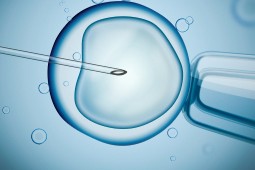TREATMENT OF INFERTILITY & IN VITRO-FERTILIZATION METHODS

Treatment of infertility & in vitro-fertilization methods
If a couple can not achieve conception in one-year period despite no use of any birth control method and sexual intercourse at regular intervals (twice to four times a week), infertility is considered for the couple. Today, infertility that may be caused one or both of the partners affects 20% of women at reproductive age. While the cause of infertility can be detected for some couples, the reason remains unexplained in 10% of cases. If the under lying cause can not be detected, the couple falls into group of idiopathic in fertility.
Causes of Infertility
Obstruction of Fallopian tubes due to past history of infection, congenital deformities in uterus, myomas, and disorders in sperm-producing canals of male subject
Ovulatory disorders such as polycystic ovary, chocolate cysts, and disorders like endometriosis
Poorly regulated metabolic diseases such as goiter and diabetes
Decrease in sperm count, deformed sperm, poorly motile sperms and total absence of sperm in semen
Genetic disorders
Improper sexual intercourse due to certain reasons, such as premature ejaculation, erectile dysfunction and vaginismus
Treatment of Infertility
Irrespective of the method actually used to manage infertility, the chance of pregnancy is 25-60% in average even for couples with no fertility disorder. Success of the treatment depends on the actual reproductive problem of the patient and the treatment method. For the treatment of infertility, success rate of invitro-fertilization ranges from 50% to 60% in women younger than 35. Under lying factor of the infertility is taken into consideration, when the treatment modality is selected for the couple.
Methods used for Treatment of Infertility
Ovulation induction
Insemination
Treatment of under lying causes of infertility
Invitro-fertilization methods and micro-injection
IVF TREATMENT CONSISTS OF 5 STEPS
Age of the individual, ovarian capacity, body mass index, genetic variations and ovarian response to previous treatments as well as history of problems in embryological development are taken into consideration InVitro-Fertilization therapy methods that consists of 5 steps:
1. Stage (Pre-Interview): IVF treatment is a 5-step process. These steps are completed in 4 weeks. In the initial discussion with the couples who want to achieve pregnancy, candidate mother and father are informed about causes of infertility and tests that are done to establish the diagnosis. Previous spermiograms, reports of X-ray examination of uterus and Fallopian tubes (hysterosalpingography – X-ray examination of uterus and Fallopian tubes- should be scanned, if not already available), and tests and reports of previous infertility treatments are reviewed and all necessary blood tests are made. Thusly, patient's history is obtained. If the candidate mother did not have a smear test within the previous year, the test is made. In the light of allexisting data, cause of infertility is detected and relevant treatment is started.
2. Stage (Induction of Ovaries): At the second stage of IVF, the candidate mother visits the doctor on second or third day of the menstrual cycle in order to have ovariese valuated. The doctor examines ovaries of the candidate mother with ultrasound and hormone analyses can be considered, if a relevant pathology is identified. Physician reviews all results and prescribes a medicine to induce ovaries and grow eggs and the patient is informed by the nurse about how the medication is taken.
3.Stage (Egg Collection or Retrieval): Egg retrieval is one of the most important stages in the inVitro-fertilization process. After eggs are grown to the target size and maturation with hormone medications, they are retrieved from uterus using a specialized syringe under general anesthesia. Eggs are retrieved from uterine cavity through vaginal route and fertilized with classic IVF or micro injection methods. Inclassic IVF, a certain number of sperms are added where the eggs are present, and it is expected that egg is fertilized by one of these sperms. In micro injection method, the healthiest sperm with best quality is selected and injected into an egg with a specialized method.
4.Stage (Embryo Transfer): Eggs and sperms that are collected for fertilization and embryo transfer are checked in the laboratory and embryo development is supervised. Embryos with highest quality are selected by the embryologist. The governing law allows transfer of one embryo for women younger than 35 and two embryos for women older than 35. Embryo(s) that meet quality criteria are implanted in the uterus by a physician with a special catheter that is inserted into uterine cervix. Although no anesthesia is administered, no pain or ache is felt during embryo transfer and the mother candidate is allowed to rest for 45 minutes to 1 hour after the procedure. She can engage in routine activities of daily life after it .
5. Stage (Supportive Treatment): Supportive medications are prescribed for the candidate mother in order to help the embryo implant better in the uterus following embryo transfer. Beta HCG level is analyzed 12 to 15 days later.


